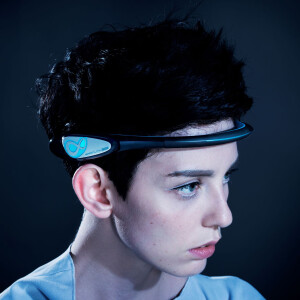

You'll only need to solder 3 wires, which connect to the Bluetooth module's GND (Ground), RXD (Receive), and VCC (Power) pins. Look through the photos to make sure you have a good sense of what needs to be soldered. UPDATE: While browsing Instructables, I noticed that arpuss had put up a tutorial using the MindFlex and the HC-06 but goes several steps further to pull raw data from it by switching the MindWave chipset into a different mode by sending a series of hex codes at 57600 baud on boot-up. However, I do not claim to know how this device fully works and take no responsibility for any harm that this project may incur. This is a relatively safe and easy hack to pull off, especially because we're using a commercially available toy and adding a Bluetooth module to it. In this tutorial, I'm going to show you what to buy, what to solder, and how to get your Bluetooth EEG headset up and running. Turns out, it works almost as good as the commercially available NeuroSky MyndWave for a quarter of the cost, and looks completely unmodified!įinally, I came across a wonderful open source application by Trent Brooks that forwards your EEG signals on via OSC so you can use it in your MAX/MSP, Processing, or other projects. I had a serial bluetooth module HC-06 lying around and decided to see if I could integrate the two and skip the Arduino altogether. It was fun to do, but it still required a cable to be attached, limited mobility, and looked hacked together. I tried out their tutorial and hacked a MindFlex headset using an Arduino. I came across FrontierNerd's Brain Hack tutorial, which gave me a good comparison of the EEG headsets and their capabilities. Last year, I wanted to see what I could control with my brain on a student's budget. Unfortunately, EEG headsets like the NeuroSky MyndWave are a bit too pricey if you just want to experiment. Controlling things with your mind is awesome.


 0 kommentar(er)
0 kommentar(er)
